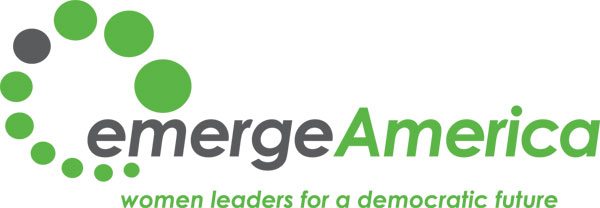
November 6, 2017; CityLab
According to political candidate recruitment, training, and support organizations, a new wave of underrepresented people is gearing up to run for local offices, especially women. In places voting today, the evidence of increased participation is already clear.
CityLab’s Sarah Holder writes,
Last November, even before the electoral college results came in, the tail of Trump and Clinton’s ugly two-year battle galvanized new pledges to run in local elections, especially amongst the young, LGBT, people of color, and women. New organizations sprung up for the express purpose of training candidates. Existing organizations doubled down to recruit and energize a new generation of leaders.
Andrea Dew Steele, president and founder of Emerge America, which trains Democratic women candidates, says “women in red states as well as blue states are up in arms.” Organizations and PACs that support these types of candidates say they are seeing record levels of participation—“doubled or tripled training class sizes; new state affiliates; and triple-digit growth in numbers of candidates who end up on the ballot.”
According to Erin Loos Cutraro, founder and CEO of She Should Run, a nonpartisan organization that supports women candidates, although there are about 520,000 elected offices in the US, over 500,000 are at the local level. Holder writes, “If these new candidates are going to make a dent in the political conversation, it’s there.”
Suzanne LaFrance, who won a city council seat in Anchorage this April, says she ran because of the polarization of the November 2016 election. “I wanted to be a part of a productive conversation that doesn’t pull people apart…the candidate who had signed up was running opposed, and he represented a lot of what was polarizing.”
Emerge America has trained 330 first-time women candidates running in 2017 and 2018. Of these, 94 are running for state office or US Congress; the rest, 236, are running for local offices. Of the 134 races that have already happened this year, 95 Emerge-backed candidates have won.
Sign up for our free newsletters
Subscribe to NPQ's newsletters to have our top stories delivered directly to your inbox.
By signing up, you agree to our privacy policy and terms of use, and to receive messages from NPQ and our partners.
She Should Run had 15,000 women participate in its program since the November 2016 election, most aiming for a local seat.
Emily’s List, which provides statistical comparisons of women candidates, says that during the two-year 2016 election cycle, 920 women expressed interest in running for office, compared to 20,000 post-election. Most of them are active at the state and local levels. According to the Center for American Women and Politics,
Women are gravely underrepresented in United States political office: they make up about 19 percent of both the Senate and the House and hold 24 percent of the 312 statewide elective executive offices in the country.… Of the 100 largest cities in the US, only 20 had women mayors, and that ratio holds for smaller cities.
Cutraro puts this in perspective when she says, “At our current rate of growth, we are not expected to see equity for women in elected office for over 150 years.”
If we filter by race, of the 20 women mayors, four are Black, one is Latina, and two are Asian Pacific Islander.
E.J. Juarez, Executive Director of Amplify, a Northwest-based political organization that supports people of color, women, young people, and LGBTQ candidates, says,
There is really a strong narrative about women running—but we know from our experience, it’s actually more specific than just women. It’s women of color that are really seeing their leadership embraced by typically mainstream organizations now.
Amanda Litman, a former Hillary Clinton Campaign staffer and co-founder of Run for Something, which supports young candidates in local races, says, “We see spikes every time Trump does something awful. Around health care, [a]round the Muslim ban, around some of the cabinet appointments. Each one of those tended to come with a respective hike.”—Cyndi Suarez











